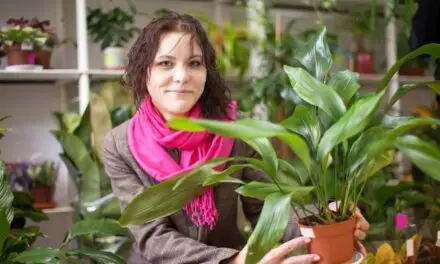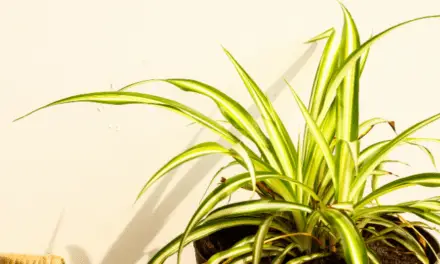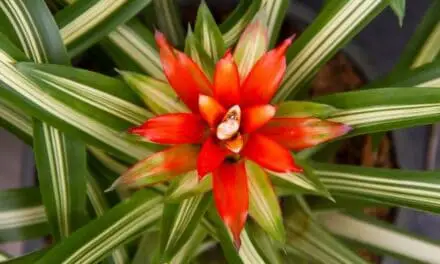Offen thought of as being desert dwellers with drought-resistant abilities, succulents have evolved to be much more than just desert plants.
From cold mountainous regions to dried-out lake beds, succulents can actually be found thriving on every continent in the world – apart from Antarctica.
They are plants with a wide range of characteristics and can adapt to almost any environment on Earth.
But are they also evergreen plants.
Table of Contents
Are Succulents Evergreen?
Yes, some species of succulents are evergreen! While it’s true they love a dry, arid environment, there are some succulents that keep their leaves all year and can handle frigid temperatures quite well.
One example of an evergreen succulent is cotyledon orbiculata, a plant native to South African that can tolerate temperatures as low as 23ºF (-5ºC).
Most succulents have the capacity to thrive in conditions far too harsh for any other plants.
Succulents VS Evergreens

A succulent plant can store water in its stems, roots, and leaves.
They’re often drought resistant and easily adapt to very dry, arid climates.
They have firm, plump, thick, and fleshy foliage that helps conserve water and minimize loss of moisture.
A classic example of a succulent would be a cactus.
Evergreens are any plant that retains its leaves all year round and through many growing seasons.
They are often coniferous trees, like pine and holly.
Cooler temperatures do not stress them and they thrive quite well, unlike oak and maple.
But evergreens can be smaller plants too, not only larger trees.
Related Article: Why Is My Succulent Rubbery?
Evergreen Succulents
Some succulents can be evergreens.
But not all succulents can be evergreens and not all evergreens are succulents.
Succulents live within many different plant families.
It’s similar when comparing cactus plants and succulent plants.
Not all succulents are cactus plants but all cacti are succulents.
Related Article: Why Is My Green Succulent Turning Red?
Types Of Evergreen Succulents
Here are various types of evergreen succulents that stand up well in colder temperatures and through the summer heat.
Aeonium
Aeoniums are a beautiful succulent variety that has some impressive evergreens that can tolerate colder winter temperatures.
Zwartkop
Rosettes of blackish-purple leaves adorn this aeonium with trunk-like stalks that produce yellow flowers in spring.
It can grow to 3 feet, both tall and wide.
Sunburst
The coppery red trunk of this succulent displays variegated white and green leaves on a perfect rosette.
It blooms white flowers in summer.
Haworthii
Blue-green leaves with pink edges spiral into rosettes that behold beautiful little yellow flowers in spring and summer.
This succulent will retain its hardiness to temperatures as cold as 25°F.
Semperviviums
Also known as Sempervivum, or “always alive,” this is a hardy evergreen succulent.
They love gravel-heavy soil that’s not overly wet in winter.
Hens and Chicks
Large, dusty, flat purple rosettes create a gradient with green into the center.
These rubbery-rose-looking succulents multiply fast and create a patch of breathtaking beauty with pink flowers in summer.
Moss Rose
A hint of magenta highlights the green leaves beset on an attractive rosette with soft, tiny hairs.
Fire Dragon
A stunning palette of colors blend and fade from a blue-green into a burgundy wine.
Although it loves full, bright sunlight, it can tolerate freezing temperatures with ease.
Agave
Most people may recognize this plant for its ability to distill into tequila and mezcal.
There are a few varieties that tolerate frigid winter nights, so long as the soil isn’t sopping wet.
Rancho Tambor
Wide and thick teeth adorn the edges of silver blue-green leaves that grow into a single rosette.
Although not as tolerant to frost as other evergreen succulents, it can take a little frost.
Queen Victoria
White markings line green geometric rosettes in this compact agave variety.
They’re slow to grow and can only handle a brief frost period that’s mild and temporary.
Blue Glow
Blue-green leaves with red edges form a single rosette that stays rather small and can hold up through frost.
Echevaria
Echevarias produce some of the most striking and beautiful color palettes ever seen on a succulent.
The evergreens in this family can tolerate cold quite well, handling around 20°F.
Black Prince
Deep greenish-brown to purple-black color fleshy, shiny leaves in a rosette producing a red flower in late fall/early winter.
But it isn’t as cold hardy as other succulents.
Metallic
Gorgeous metallic bronze-green leaves cover a rosette with curved spoon-shaped wavy pink edges.
Tippy or Sunburst
This ornamental evergreen succulent has bluish-green leaves with prominent pink tips.
The flowers are bell-shaped and orange.
How Cold Is Too Cold For Succulents?
Succulents tend to do well in dryer temperate climates ranging in temperatures from about 60 to 80°F.
Most varieties of succulents are frost-tender, cannot handle freezing temperatures, and go dormant in winter.
But some hardier types can survive when temperatures dip lower than 30°F.
And the toughest of succulents have even evolved a type of built-in antifreeze that allows them to survive subzero temperatures for longer periods.
The problem arises for regular succulents when the water they hold onto freezes and expands, turning their structures and leaves to mush.
Final Thoughts
You’ll find succulents growing in the Andes Mountains at altitudes of 2,000 to 3,000 meters.
You’ll also find them inhabiting sea coasts and dry lake beds, where dissolved minerals would make it too deadly for many other plant species to exist.
Succulents can be found everywhere so it comes as no surprise that some of them can be classed as evergreen plants.
The world of succulents is vast and amazing.
They span the globe and come in a host of shapes, environmental tolerances, and color combinations.
There’s a whole arena of exploration and discovery that offers beauty, wonder, and enjoyment, even as evergreens all year round.




